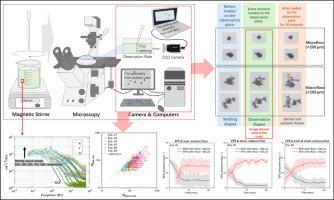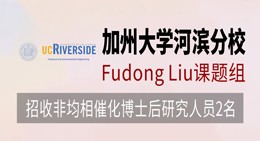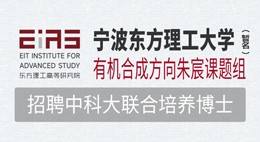当前位置:
X-MOL 学术
›
Water Res.
›
论文详情
Our official English website, www.x-mol.net, welcomes your
feedback! (Note: you will need to create a separate account there.)
New insight of biophysical aggregates’ geometric distributions from side and bottom views during their flocculation and settling in saline water
Water Research ( IF 11.4 ) Pub Date : 2024-12-04 , DOI: 10.1016/j.watres.2024.122916 Leiping Ye, Ying Chen, Ya Wu, Jiayao Zhang, Yujie Chen, Jun Young Seo, Jiaxue Wu
Water Research ( IF 11.4 ) Pub Date : 2024-12-04 , DOI: 10.1016/j.watres.2024.122916 Leiping Ye, Ying Chen, Ya Wu, Jiayao Zhang, Yujie Chen, Jun Young Seo, Jiaxue Wu

|
Biophysical mud aggregates, consisting of clay minerals and extracellular polymeric substances (EPS), play critical roles in water quality and aquatic ecosystem health. However, the geometric properties from different side views and flocculation dynamic behavior of these aggregates with highly irregular shapes in saline water environments remain poorly understood, particularly under the combined effects of buoyancy and gravity during settling processes. This study introduces a novel dual-view approach, combining an inverted depth-of-field microscope and side camera, to capture high-resolution images of floc geometries from both side and bottom perspectives. A series of laboratory-controlled experiments were conducted to investigate floc formed from pure clay mineral and clay-EPS mixtures, analyzing their size, shape and settlings. The results reveal significant discrepancies between side-view and bottom-view measurements, demonstrating that bottom-view imaging provides a more accurate understanding of floc geometry considering buoyancy and gravity during flocs settling in saline water. Moreover, flocs formed from clay-EPS mixtures exhibited greater size and irregularity compared to those formed solely of clay minerals. EPS-mediated biological cohesion was found to promote the formation of larger, stable macroflocs (≥200 μm) capable of maintaining their structure under turbulent conditions, while pure mineral flocs remained smaller and more compact. Despite increasing floc size, EPS reduced effective density, resulting in overlapping settling velocities between macroflocs and microflocs (<200 μm). This study provides a foundational dataset and innovative methodology for analyzing mud floc geometries, offering new insights into the role of bio-cohesion in natural sediment flocculation dynamics. These findings underscore the need for flocculation models to incorporate organic influences and advocate for multi-perspective observations to improve predictions of fine-grained sediment transport in saline environments.
中文翻译:

从侧面和底部视图了解生物物理聚集体在絮凝和沉降于盐水中过程中的几何分布
由粘土矿物和细胞外聚合物物质 (EPS) 组成的生物物理泥浆聚集体在水质和水生生态系统健康中起着关键作用。然而,这些形状高度不规则的聚集体在盐水环境中的不同侧视图的几何特性和絮凝动力学行为仍然知之甚少,特别是在沉降过程中浮力和重力的共同作用下。本研究引入了一种新颖的双视图方法,该方法结合了倒置景深显微镜和侧面摄像头,可从侧面和底部角度捕获絮凝体几何形状的高分辨率图像。进行了一系列实验室控制实验,以研究由纯粘土矿物和粘土-EPS 混合物形成的絮凝物,分析它们的大小、形状和沉降。结果揭示了侧视图和底视图测量值之间的显着差异,表明考虑到絮凝体在盐水中沉降过程中的浮力和重力,底视图成像可以更准确地理解絮凝体的几何形状。此外,与仅由粘土矿物形成的絮凝体相比,由粘土-EPS 混合物形成的絮凝体表现出更大的尺寸和不规则性。发现 EPS 介导的生物内聚力促进了更大、更稳定的大絮凝体 (≥200 μm) 的形成,这些絮凝体能够在湍流条件下保持其结构,而纯矿物絮凝体保持更小、更紧凑。尽管絮凝体尺寸增加,但 EPS 降低了有效密度,导致大絮凝体和微絮凝体之间的沉降速度重叠 (<200 μm)。 本研究为分析泥浆絮凝物几何形状提供了基础数据集和创新方法,为生物内聚力在自然沉积物絮凝动力学中的作用提供了新的见解。这些发现强调了絮凝模型需要结合有机影响并倡导多视角观察,以改进对盐水环境中细粒沉积物迁移的预测。
更新日期:2024-12-04
中文翻译:

从侧面和底部视图了解生物物理聚集体在絮凝和沉降于盐水中过程中的几何分布
由粘土矿物和细胞外聚合物物质 (EPS) 组成的生物物理泥浆聚集体在水质和水生生态系统健康中起着关键作用。然而,这些形状高度不规则的聚集体在盐水环境中的不同侧视图的几何特性和絮凝动力学行为仍然知之甚少,特别是在沉降过程中浮力和重力的共同作用下。本研究引入了一种新颖的双视图方法,该方法结合了倒置景深显微镜和侧面摄像头,可从侧面和底部角度捕获絮凝体几何形状的高分辨率图像。进行了一系列实验室控制实验,以研究由纯粘土矿物和粘土-EPS 混合物形成的絮凝物,分析它们的大小、形状和沉降。结果揭示了侧视图和底视图测量值之间的显着差异,表明考虑到絮凝体在盐水中沉降过程中的浮力和重力,底视图成像可以更准确地理解絮凝体的几何形状。此外,与仅由粘土矿物形成的絮凝体相比,由粘土-EPS 混合物形成的絮凝体表现出更大的尺寸和不规则性。发现 EPS 介导的生物内聚力促进了更大、更稳定的大絮凝体 (≥200 μm) 的形成,这些絮凝体能够在湍流条件下保持其结构,而纯矿物絮凝体保持更小、更紧凑。尽管絮凝体尺寸增加,但 EPS 降低了有效密度,导致大絮凝体和微絮凝体之间的沉降速度重叠 (<200 μm)。 本研究为分析泥浆絮凝物几何形状提供了基础数据集和创新方法,为生物内聚力在自然沉积物絮凝动力学中的作用提供了新的见解。这些发现强调了絮凝模型需要结合有机影响并倡导多视角观察,以改进对盐水环境中细粒沉积物迁移的预测。































 京公网安备 11010802027423号
京公网安备 11010802027423号